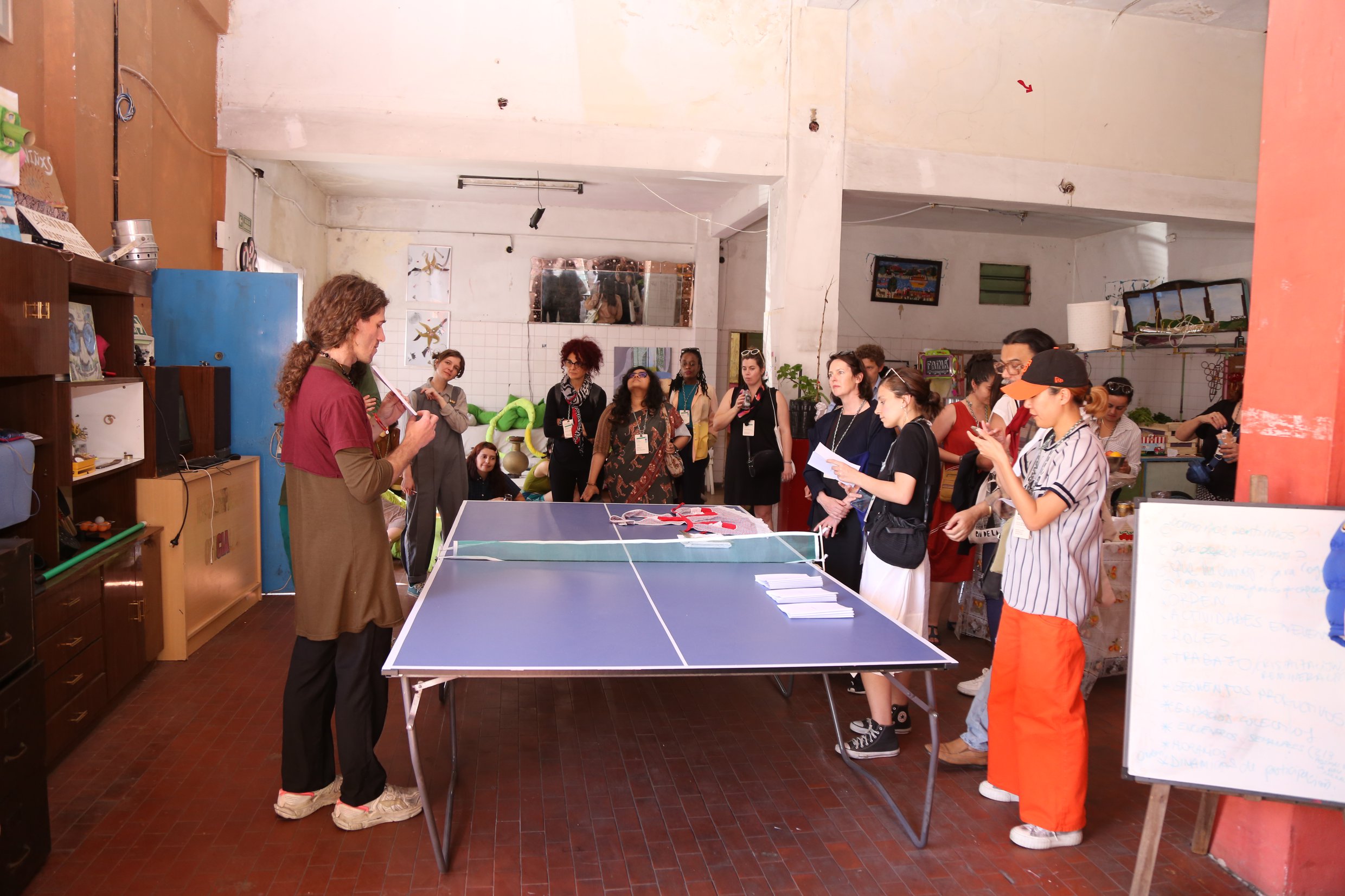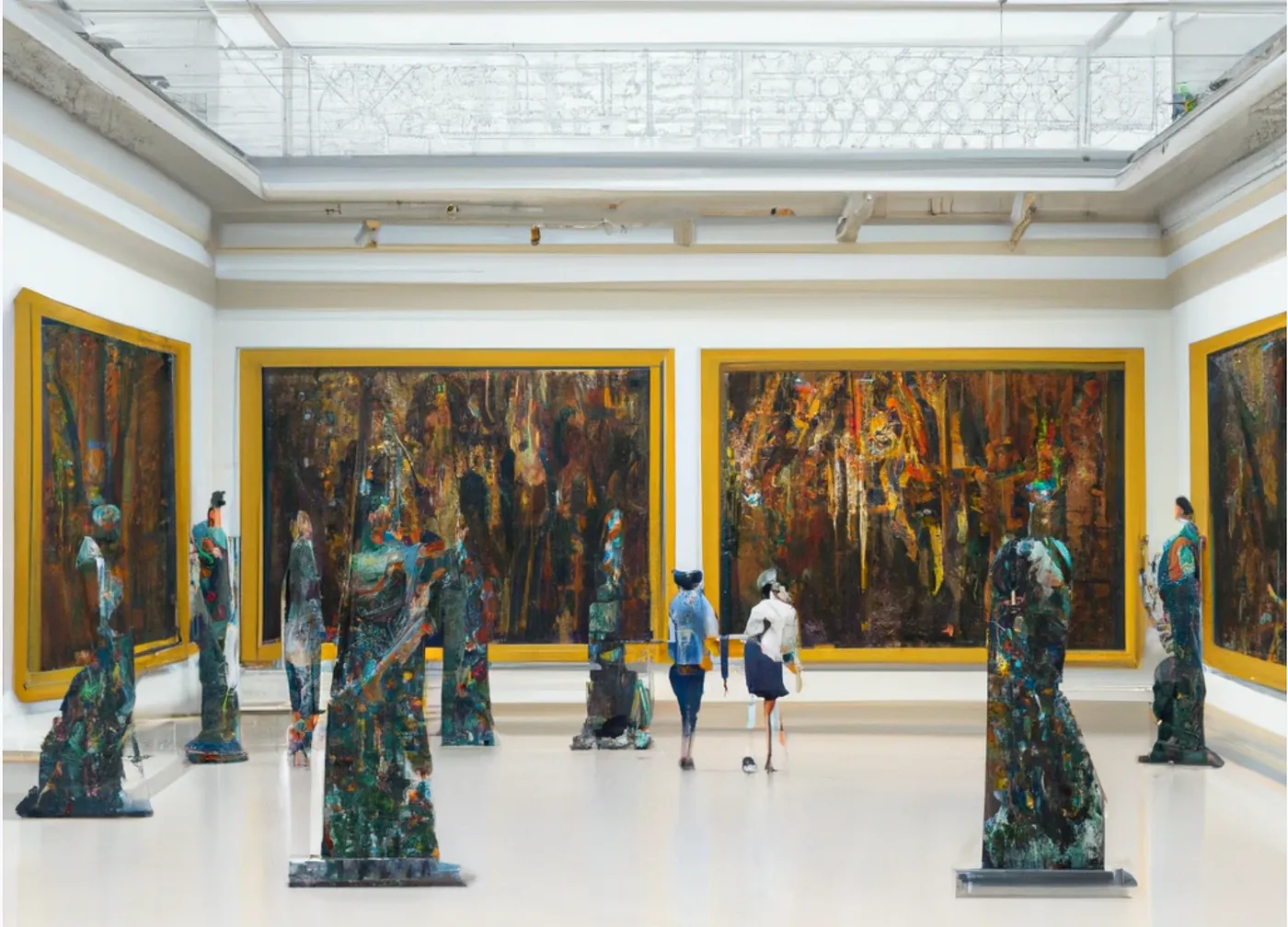Readings recommended by CIMAM

Tuesday, January 30: This week, CIMAM recommends the article "AI and the Future of Museum Work" by Stacey Kaleh for Medium, the book "Museums and the Climate Crisis" edited by Nick Merriman and published by Taylor & Francis, a recommendation from a CIMAM member, the book "Paradise Camp" by Yuki Kihara, edited by Natalie King and published by Thames and Hudson, and the latest ICOM Museums and Chill podcast on How Museums and Culture Relate to Health and Wellness, with Professor Helen Chatterjee, don't miss it!
AI and the Future of Museum Work
Together, Human Intelligence and Artificial Intelligence Can Unlock Deeper Capacity to Understand the Past, Connect with Art, and Challenge Current Societal Expectations
Written by Stacey Kaleh, and originally published on Medium on Monday, 29 January 2024.
These days, I engage with a lot of programming about AI and the future of work. These discussions tend to focus on industry and government work. Somewhat overlooked (as of now) is the idea artificial intelligence technologies have a lot to offer to nonprofits of all kinds.
Museums — places we gather to learn more about what it means to be human — may seem like unlikely places for AI technologies to contribute. Yet, as someone who started her career in museums and now works to support Ethical AI research, I see a lot of opportunity for AI tools to enhance both the museum worker and museum visitor experience.
I’ve written before about my journey from museum work (I focused on enhancing accessibility and community engagement through audience-centered communications & branding) to supporting research and education in responsible AI. Based on what I’ve learned and continue to learn as these technologies and our relationships with them rapidly evolve, I’d like to explore some ideas for how museums can currently use AI tools to their benefit and to the benefit of the publics they serve.
Here are some opportunities I feel museums should consider:
- Be early adopters. Or, at least, don’t be late adopters. Your audience will thank you.
Museums need to examine their relationship with technology, again.
I worked in museums while they transitioned from paper to digital work and resources, and saw many institutions hesitatant — and outright scared — to embrace social media and digital collection access. Picture me entering object data from cards in the physical card catalog to digital databases and pitching out-of-the-box ideas to create many-a-first Facebook, Twitter, and Artsy accounts for the museums I worked in. Now, take a look at how far we’ve come! Social media and digital collection databases seem like fixtures of museum work. They’ve brought more people more access to more art, artifacts, and information, advancing the core mission of museums.
Museums were timid and slow to start using social media, cell phone audio guides, and digital databases, for fear people would experience art and information online and not be as compelled to come experience it in person. But these tools only whet our appetite for the in-person experience, exciting us, piquing our curiosity, and allowing us to appreciate what the in-person experience grants us that a digital or textbook experience does not. And they ended up being a great way to expand access and enhance engagement with audiences who were craving this type of content and ready for it much sooner than the museums were.
I hope museums are not as late to adopt AI technologies. In a similar way, AI tools can help museums better respond to their audiences’ needs and desires by creating a more interactive dialogue and customized experience, expand the breadth and depth of knowledge they make available to their publics, and build capacity when budgets are tight.
Museums would be wise to notice that technology isn’t in control of anything more than we allow it to be. AI tech does what it’s programmed by a human to do, and that programming can be customized to help advance museum work.
Human-technology-human and human-to-human experiences could be seen as oppositional, but can just as easily be seen as complimentary and harmonious. After all, both help us understand the human condition, relationships, communication, and our capacity for creativity, invention (and re-invention), and appreciation of beauty. And that can be truly inspiring. We need more of that.
- Lead the conversation on what it means to have these technologies in our lives.
Museums have long served as public forums — safe spaces to dive into complex questions and topics. Museums have a real opportunity right now to help communities understand their relationships with AI technologies, assess their benefits and risks, and to raise questions about how we want — and don’t want — AI in our lives. Museums can help us connect the dots between where we came from, where we are, and where we are going as a society, and they should lean into that role.
- Provide Next-level Storytelling Experiences
With the affordable and accessible AI technologies now available at our fingertips, thanks to big data and advanced computing power, the tangible and intangible can merge for a new type of storytelling. Museums should get creative when it comes to designing immersive experiences that pair technology with human connection.
A few thought-starters:
- Large language model (LLM) -powered personalized audio guides that can chat with you and answer your questions in a personal, conversational way
- Better GPS-enhanced wayfinding tools with multi-sensory directions and descriptions for people of all abilities
- Exhibitions that help visitors imagine the past or future by using text-to-image generators like DALL-E and Midjourney to create powerful visuals
- Co-created exhibitions where curators and visitors become partners in creating a digital companion experience
- Custom LLM-driven chatbots to help students and researchers navigate extensive collection databases, fact-checked by museum staff
- Establish Significant Collections of Artists’ AI Art
Contemporary art museums and universal survey museums have and can continue to establish important collections of art created by artists using AI-tools, led by their own perspective and ingenuity. It will be important for us as a society to analyze this moment and how our culture and ideas about copyright and intellectual property shifted. There’s a lot at stake, and we need great art to help us reflect and evaluate.
See my thoughts on the rise of AI Art and similarities with the advent of the camera.
- Create New Roles for Museum Workers
There are more people passionate about museum work than great jobs available for those people. Museums can consider adding roles to their staff roster to help lead innovation.
I personally believe that AI should not eliminate any museum jobs. While technology always has a tendency to redefine roles and scopes of work, this can be managed with slight shifts in responsibility and by providing training. Humans can do much more than AI technologies can in terms of serving museum visitors, and AI can do things humans can’t do — like analyze and summarize vast amounts of data in a few seconds. Humans equipped with AI tools can do more than either can alone — and that’s the sweet spot.
As we look to the future of museum work, some roles may include:
- Curator of AI Art
- Chatbot managers and prompters in visitor services and member services
- Research Assistants versed in generative AI tools
- Digital Collections Managers that can train AI algorithms and LLMs to enhance search and discovery
- Docents that can train AI audio guides
- Program Directors that can design hybrid in-person and online experiences
- Marketing Managers trained to use ChatGPT to streamline workflows (assist with editing and marketing copy)

This is just a quick brainstorm, and I’m sure there are numerous other ways museums can amplify and enhance their services by embracing AI. I encourage museum professionals to start thinking about this: As AI technologies rapidly develop and improve, so will the way we work and experience the world around us. More opportunities will open up, and we can all help imagine what those will be and help bring them to fruition. Museums have an opportunity now to join conversations about the development and deployment of AI and ensure these technologies are designed with their unique visions and visitors’ needs in mind.
Stacey Ingram Kaleh holds an MA in Museum Studies from NYU and a BS in Advertising from UT Austin.
Museums and the Climate Crisis
Edited by Nick Merriman and published with Taylor and Francis on 22 December 2023
Abstract:
Museums and the Climate Crisis shows how museums can respond to the interrelated global climate, biodiversity and pollution crises. They have a unique role because they take a long-term perspective, and their scholarship and independence mean that they remain trusted by the public.
Providing insights and international case studies from a range of museum and gallery professionals, academics and consultants, this book explores how museums can use this unique perspective to engage the public as active citizens, and how they are exemplars of good practice in areas such as emissions reduction and encouraging biodiversity. It shows how museums can combat climate exhaustion by drawing on understandings about positive motivation, and how to develop exhibitions, events and activities that motivate visitors to take action. Taking a broad approach beyond purely climate issues, the contributions touch on the use of renewables, environmental controls and standards, travel (including virtual couriering), waste management (including recycling, plastic reduction and composting), reducing pollution and increasing biodiversity within museums.
Museums and the Climate Crisis will be important reading to those studying in the fields of Museum Studies, Heritage Studies and Conservation. Taking a practical approach, it will also be beneficial to museum, gallery and heritage professionals who are grappling with the challenges of the climate crisis.
Paradise Camp by Yuki Kihara
Edited by Natalie King and published by Thames and Hudson on 23 April 2022
This is a recommendation by a CIMAM member ;)
Overview:
Interdisciplinary artist Yuki Kihara is the first Pasifika and first Fa'afafine artist to be presented by New Zealand at the prestigious 59th International Art Exhibition — La Biennale di Venezia, with a ground-breaking exhibition of new work that addresses some of the most pressing issues of our time. Kihara's work interrogates and dismantles gender roles, consumerism, (mis)representation, and colonial legacies in the Pacific. Edited by Natalie King, who has commissioned provocative essays from contributors from around the world, Paradise Camp contextualizes Kihara’s lifetime of works, which puncture and expose queer and question dominant narratives, turning so-called history on its head.
Museums and Chill – How are museums and culture related to health and well-being?
In this new episode of Museums and Chill, Anapaula García Soto, Communications Coordinator at the International Council of Museums, talks to Professor Helene Chatterjee,Professor of Biology at UCL working across UCL Biosciences and UCL Arts & Sciences, about the relationship of museums and culture to health and wellbeing
Discover how museum spaces serve as havens, fostering a sense of calm and inspiration. Can a visit to a museum really contribute to your overall wellbeing? Dr Charterjee shares ideas, backed by research, that can change your perspective.
Museums and Chill is available on Spotify, Google Podcasts, and Apple Podcast!